| Listing 1 - 10 of 41 | << page >> |
Sort by
|
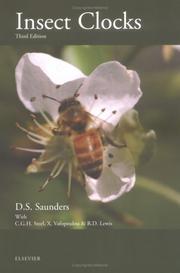
ISBN: 0444504079 9786611029524 1281029521 0080534716 9780444504074 9780080534718 Year: 2002 Publisher: Amsterdam ; Boston : Elsevier,
Abstract | Keywords | Export | Availability | Bookmark
 Loading...
Loading...Choose an application
- Reference Manager
- EndNote
- RefWorks (Direct export to RefWorks)
Chronobiology is the study of timing mechanisms in biological systems as diverse as plants, animals and some micro-organisms. It includes rhythmic phenomena ranging from short period (ultradian) through daily (circadian) to long period (monthly, annual) cycles of behaviour, physiology and biochemistry. In recent years spectacular advances have been made, particularly in the field of circadian rhythms, and hardly a week passes without important papers appearing in the major scientific journals. The third edition of Insect Clocks, like its predecessors, deals with the properties and
Insects --- Biological rhythms. --- Physiology. --- Behavior. --- Biological clocks --- Biology --- Biorhythms --- Endogenous rhythms --- Living clocks --- Rhythms, Biological --- Chronobiology --- Cycles --- Pacemaker cells --- Insect behavior --- Periodicity --- Insects - Physiology. --- Insects - Behavior.
Book
ISBN: 0674069692 0674065859 0674065484 9780674065482 9780674065857 9780674069695 Year: 2012 Publisher: Cambridge, MA
Abstract | Keywords | Export | Availability | Bookmark
 Loading...
Loading...Choose an application
- Reference Manager
- EndNote
- RefWorks (Direct export to RefWorks)
Early birds and night owls are born, not made. Sleep patterns may be the most obvious manifestation of the highly individualized biological clocks we inherit, but these clocks also regulate bodily functions from digestion to hormone levels to cognition. Living at odds with our internal timepieces, Till Roenneberg shows, can make us chronically sleep deprived and more likely to smoke, gain weight, feel depressed, fall ill, and fail geometry. By understanding and respecting our internal time, we can live better.Internal Time combines storytelling with accessible science tutorials to explain how our internal clocks work-for example, why morning classes are so unpopular and why "lazy" adolescents are wise to avoid them. We learn why the constant twilight of our largely indoor lives makes us dependent on alarm clocks and tired, and why social demands and work schedules lead to a social jet lag that compromises our daily functioning.Many of the factors that make us early or late "chronotypes" are beyond our control, but that doesn't make us powerless. Roenneberg recommends that the best way to sync our internal time with our external environment and feel better is to get more sunlight. Such simple steps as cycling to work and eating breakfast outside may be the tickets to a good night's sleep, better overall health, and less grouchiness in the morning.
Chronobiology. --- Biological rhythms. --- Biological clocks --- Biology --- Biorhythms --- Endogenous rhythms --- Living clocks --- Rhythms, Biological --- Chronobiology --- Cycles --- Pacemaker cells --- Biological time --- Time --- Periodicity
Book
ISBN: 019857357X Year: 1977 Publisher: Oxford Clarendon Press
Abstract | Keywords | Export | Availability | Bookmark
 Loading...
Loading...Choose an application
- Reference Manager
- EndNote
- RefWorks (Direct export to RefWorks)
Birds --- Animal ethology and ecology. Sociobiology --- Biological rhythms --- Reproduction --- -#ABIB:aeco --- Biological clocks --- Biology --- Biorhythms --- Endogenous rhythms --- Living clocks --- Rhythms, Biological --- Chronobiology --- Cycles --- Pacemaker cells --- Aves --- Avian fauna --- Avifauna --- Wild birds --- Amniotes --- Vertebrates --- Ornithology --- Periodicity --- Biological rhythms. --- Reproduction. --- #ABIB:aeco
Book
ISBN: 0394468910 9780394468914 Year: 1971 Publisher: New York (N.Y.): Pantheon
Abstract | Keywords | Export | Availability | Bookmark
 Loading...
Loading...Choose an application
- Reference Manager
- EndNote
- RefWorks (Direct export to RefWorks)
Biological rhythms --- Stress (Physiology) --- 159.91 --- Physiological stress --- Tension (Physiology) --- Adaptation (Biology) --- Biological clocks --- Biology --- Biorhythms --- Endogenous rhythms --- Living clocks --- Rhythms, Biological --- Chronobiology --- Cycles --- Pacemaker cells --- Psychofysiologie. Neuropsychologie. Psychomotoriek. Psychomotorische therapie --- Periodicity --- 159.91 Psychofysiologie. Neuropsychologie. Psychomotoriek. Psychomotorische therapie
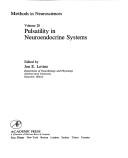
ISBN: 012185289X 9780121852894 148328834X Year: 1994 Publisher: San Diego, California : Academic Press,
Abstract | Keywords | Export | Availability | Bookmark
 Loading...
Loading...Choose an application
- Reference Manager
- EndNote
- RefWorks (Direct export to RefWorks)
Pulsatility is now recognized as a nearly ubiquitous functional feature of neuroendocrine systems. This volume presents a comprehensive guide to the established and emerging technologies being used to study the perplexing phenomenon of pulsatility. Molecular, cellular, physiological, and mathematical approaches are described in detail.Comprehensive protocols included for the study of* In vitro methods for studying neuroendocrine pulsatility* In vivo sampling and recording procedures for monitoring pulsatility in several species* Improved quantitative and analy
Paraneurons. --- Biological rhythms. --- Cell interaction. --- Cell-cell interaction --- Cell communication --- Cellular communication (Biology) --- Cellular interaction --- Intercellular communication --- Cellular control mechanisms --- Biological clocks --- Biology --- Biorhythms --- Endogenous rhythms --- Living clocks --- Rhythms, Biological --- Chronobiology --- Cycles --- Pacemaker cells --- Neuroendocrine cells --- Neurons --- Chromaffin cells --- Periodicity
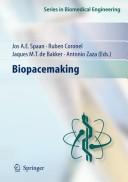
ISSN: 16153871 ISBN: 1281065781 9786611065782 354072110X 3540721096 364209127X Year: 2007 Publisher: Berlin ; New York : Springer,
Abstract | Keywords | Export | Availability | Bookmark
 Loading...
Loading...Choose an application
- Reference Manager
- EndNote
- RefWorks (Direct export to RefWorks)
The development of a bio-engineered pacemaker is of substantial clinical and also scientific interest because it promises to overcome several limitations of electronic pacemakers. Moreover it may answer the longstanding question of whether the complex structure of the sinus node is indeed a prerequisite for reliable pacemaking, or simpler structures might work as well. This book gives an overview of the current state-of-the-art of creating a bio-engineered pacemaker. It shows the approaches to develop of genetic and cell-based engineering methods suitable to implement them with safety and stability. It also illuminates the problems that need to be solved before bio-pacemaking can be considered for clinical use.
Biological rhythms. --- Pacemaker cells. --- Mathematical Sciences --- Applied Mathematics --- Engineering. --- Human physiology. --- Cardiology. --- Application software. --- Biophysics. --- Biological physics. --- Biomedical engineering. --- Biomedical Engineering. --- Human Physiology. --- Computer Applications. --- Biophysics and Biological Physics. --- Clinical engineering --- Medical engineering --- Bioengineering --- Biophysics --- Engineering --- Medicine --- Biological physics --- Biology --- Medical sciences --- Physics --- Application computer programs --- Application computer software --- Applications software --- Apps (Computer software) --- Computer software --- Heart --- Internal medicine --- Human biology --- Physiology --- Human body --- Construction --- Industrial arts --- Technology --- Diseases --- Biological pacemakers --- Natural pacemakers --- Pacemakers, Biological --- Cells --- Biological rhythms --- Biological clocks --- Biorhythms --- Endogenous rhythms --- Living clocks --- Rhythms, Biological --- Chronobiology --- Cycles --- Pacemaker cells --- Periodicity --- Computer science. --- Biomedical Engineering and Bioengineering. --- Biological and Medical Physics, Biophysics. --- Informatics --- Science
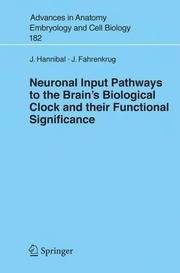
ISBN: 1280613033 9786610613038 3540277897 3540277889 Year: 2006 Publisher: Berlin ; New York : Springer,
Abstract | Keywords | Export | Availability | Bookmark
 Loading...
Loading...Choose an application
- Reference Manager
- EndNote
- RefWorks (Direct export to RefWorks)
Circadian rhythms are entrained daily by environmental photic and non-photic cues. The present review describes the anatomy and functional characteristics of the three major input pathways to the circadian clock mediating entrainment, the retino-hypothalamic tract (RHT), the geniculo-hypothalamic tract (GHT) and the midbrain raphe projection.
Suprachiasmatic nucleus. --- Biological rhythms. --- Biological clocks --- Biology --- Biorhythms --- Endogenous rhythms --- Living clocks --- Rhythms, Biological --- Chronobiology --- Cycles --- Pacemaker cells --- Nucleus, Suprachiasmatic --- Hypothalamus --- Periodicity --- Medicine. --- Biomedicine general. --- Clinical sciences --- Medical profession --- Human biology --- Life sciences --- Medical sciences --- Pathology --- Physicians --- Biomedicine, general. --- Health Workforce --- Medicine --- Biomedical Research. --- Research. --- Biological research --- Biomedical research
Book
ISBN: 0125444508 0323152422 1299473946 9780125444507 Year: 1976 Publisher: New York, N.Y. Academic Press
Abstract | Keywords | Export | Availability | Bookmark
 Loading...
Loading...Choose an application
- Reference Manager
- EndNote
- RefWorks (Direct export to RefWorks)
Animal physiology. Animal biophysics --- Plant physiology. Plant biophysics --- Biological rhythms --- 57.034 --- Biological clocks --- Biology --- Biorhythms --- Endogenous rhythms --- Living clocks --- Rhythms, Biological --- Chronobiology --- Cycles --- Pacemaker cells --- Cyclic variations, oscillation. Rhythmicity. --- Periodicity --- 57.034 Cyclic variations, oscillation. Rhythmicity. --- Cyclic variations, oscillation. Rhythmicity
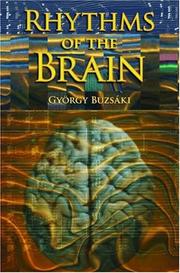
ISBN: 9780195301069 0195301064 9780199828234 Year: 2006 Publisher: Oxford Oxford University Press
Abstract | Keywords | Export | Availability | Bookmark
 Loading...
Loading...Choose an application
- Reference Manager
- EndNote
- RefWorks (Direct export to RefWorks)
Physiology of nerves and sense organs --- Psychology --- Brain --- Cortical Synchronization. --- Periodicity. --- Oscillations. --- Biological rhythms. --- Cerveau --- Oscillations --- Rythmes biologiques --- physiology. --- Physiology. --- Physiologie --- Medische psychologie --- neuropsychologie --- neuropsychologie. --- Biological rhythms --- Cycles --- Fluctuations (Physics) --- Vibration --- Biological clocks --- Biology --- Biorhythms --- Endogenous rhythms --- Living clocks --- Rhythms, Biological --- Chronobiology --- Pacemaker cells --- Physiology --- Periodicity --- Rythmes biologiques. --- Physiologie. --- physiology
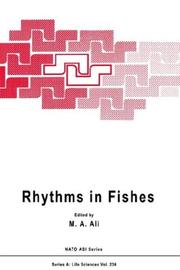
ISBN: 030644318X 1461363268 1461530423 Year: 1992 Volume: vol 236 Publisher: New York (N.Y.): Plenum
Abstract | Keywords | Export | Availability | Bookmark
 Loading...
Loading...Choose an application
- Reference Manager
- EndNote
- RefWorks (Direct export to RefWorks)
Biological rhythms --- -Fishes --- -57.034 --- 597 --- Fish --- Pisces --- Aquatic animals --- Vertebrates --- Fisheries --- Fishing --- Ichthyology --- Biological clocks --- Biology --- Biorhythms --- Endogenous rhythms --- Living clocks --- Rhythms, Biological --- Chronobiology --- Cycles --- Pacemaker cells --- Congresses --- Behavior --- -Congresses --- Physiology --- Cyclic variations, oscillation. Rhythmicity. --- Pisces. Fishes. Ichthyology --- Periodicity --- 597 Pisces. Fishes. Ichthyology --- 57.034 Cyclic variations, oscillation. Rhythmicity. --- Fishes --- 57.034 --- Behavior&delete& --- Physiology&delete& --- Cyclic variations, oscillation. Rhythmicity
| Listing 1 - 10 of 41 | << page >> |
Sort by
|

 Search
Search Feedback
Feedback About UniCat
About UniCat  Help
Help News
News